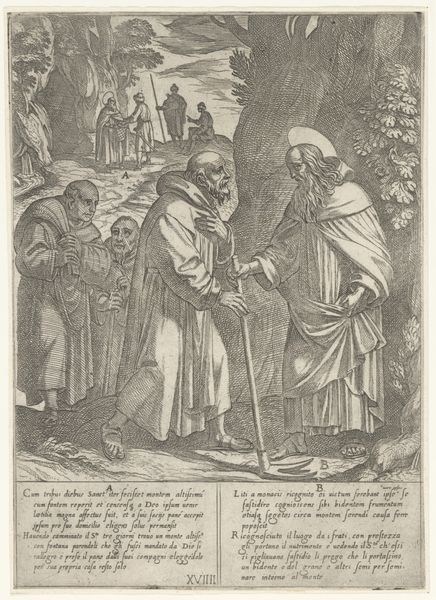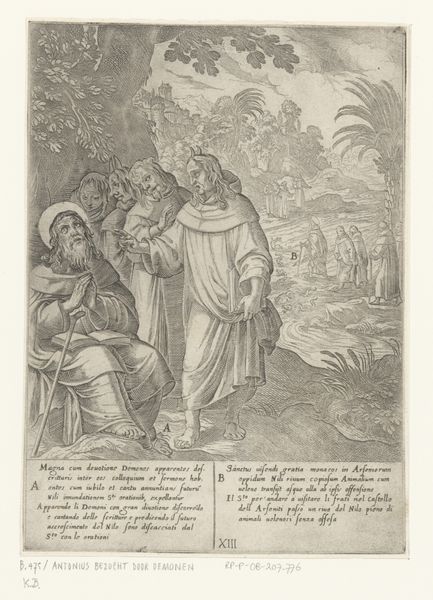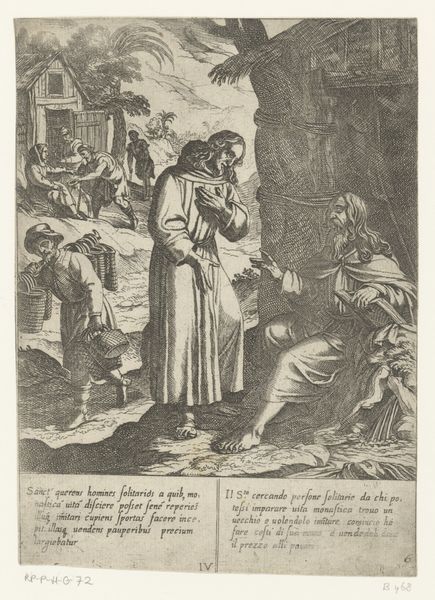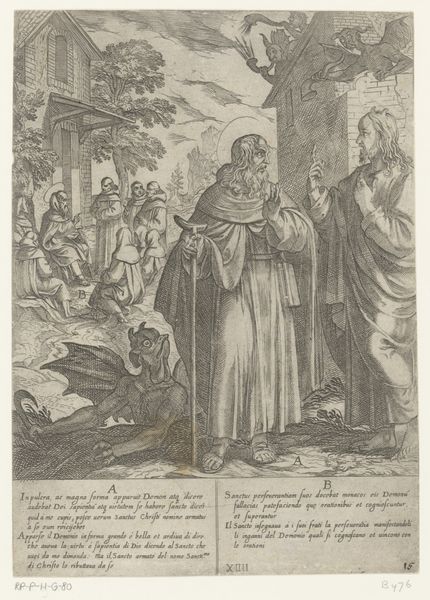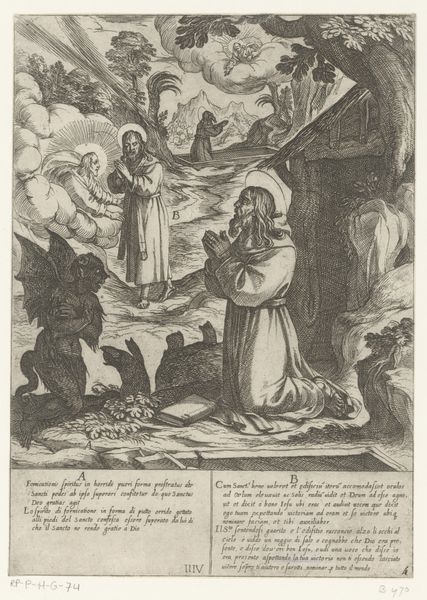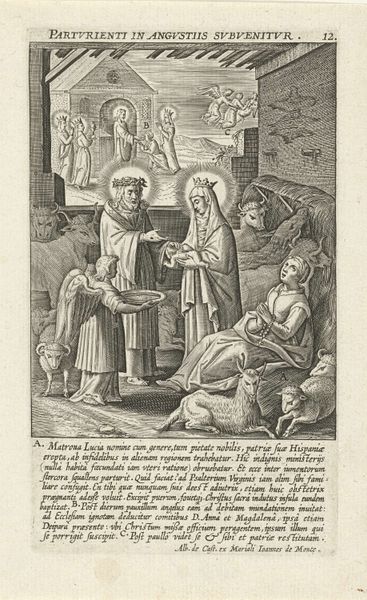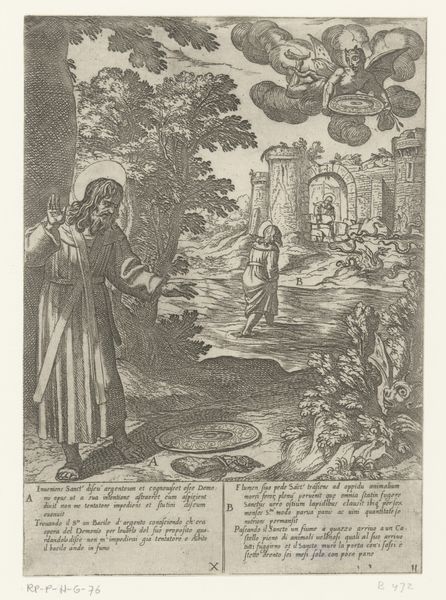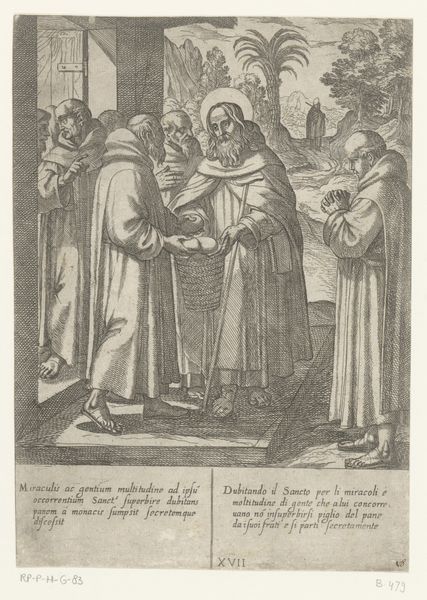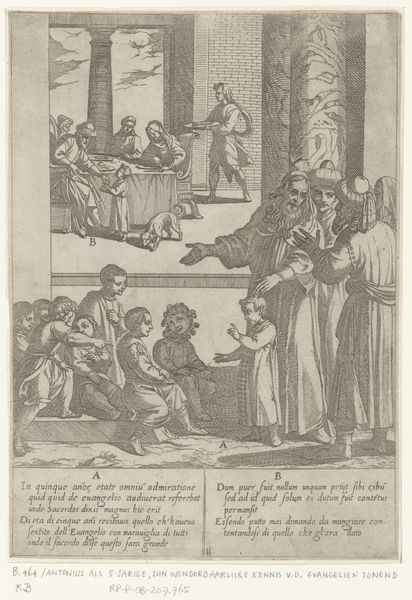
print, etching, engraving
#
narrative-art
#
baroque
# print
#
etching
#
book
#
old engraving style
#
figuration
#
history-painting
#
italian-renaissance
#
engraving
Dimensions: height 231 mm, width 163 mm
Copyright: Rijks Museum: Open Domain
Editor: So, this is "Maximilianus asks St. Anthony to heal his daughter," an etching and engraving by Antonio Tempesta from 1598, currently held at the Rijksmuseum. The scene feels quite theatrical, almost like a stage play. What historical currents might have shaped this work? Curator: The drama is undeniable, isn’t it? Consider the context: the late 16th century was a period rife with religious and political tension. The rise of Protestantism challenged Catholic orthodoxy, and narratives emphasizing faith, divine intervention, and the power of saints gained considerable importance. Now, given that Tempesta was working during the Counter-Reformation, how might that influence your understanding? Editor: I guess it means there was an active interest in reaffirming the miracles of saints and the Church’s power to heal, and how a good deed always pays off with a divine miracle. Is the “othering” of the characters typical of this type of piece at the time? Curator: Exactly. This work isn’t just about religious devotion. Who do you think Maximilianus might represent in a contemporary light? The ‘othering,’ as you put it, serves to reinforce social boundaries, constructs of “us” versus “them.” The “us” being the Christian Europe and its values and ‘others’ representing the lands where other divinities are praised. Editor: Interesting, so it becomes a commentary on power dynamics of the era, doesn't it? The powerful vs the powerless? The ‘self’ and the ‘other’. Curator: Precisely. This isn't merely a historical artifact; it’s a window into the anxieties, power structures, and ideological battles of its time. Looking at art as a dialogue allows us to have conversations with the past about what our society looks like now. Editor: I’m beginning to see how historical narratives can become embedded within visual culture, impacting our perception of not just the past, but ourselves.
Comments
No comments
Be the first to comment and join the conversation on the ultimate creative platform.
